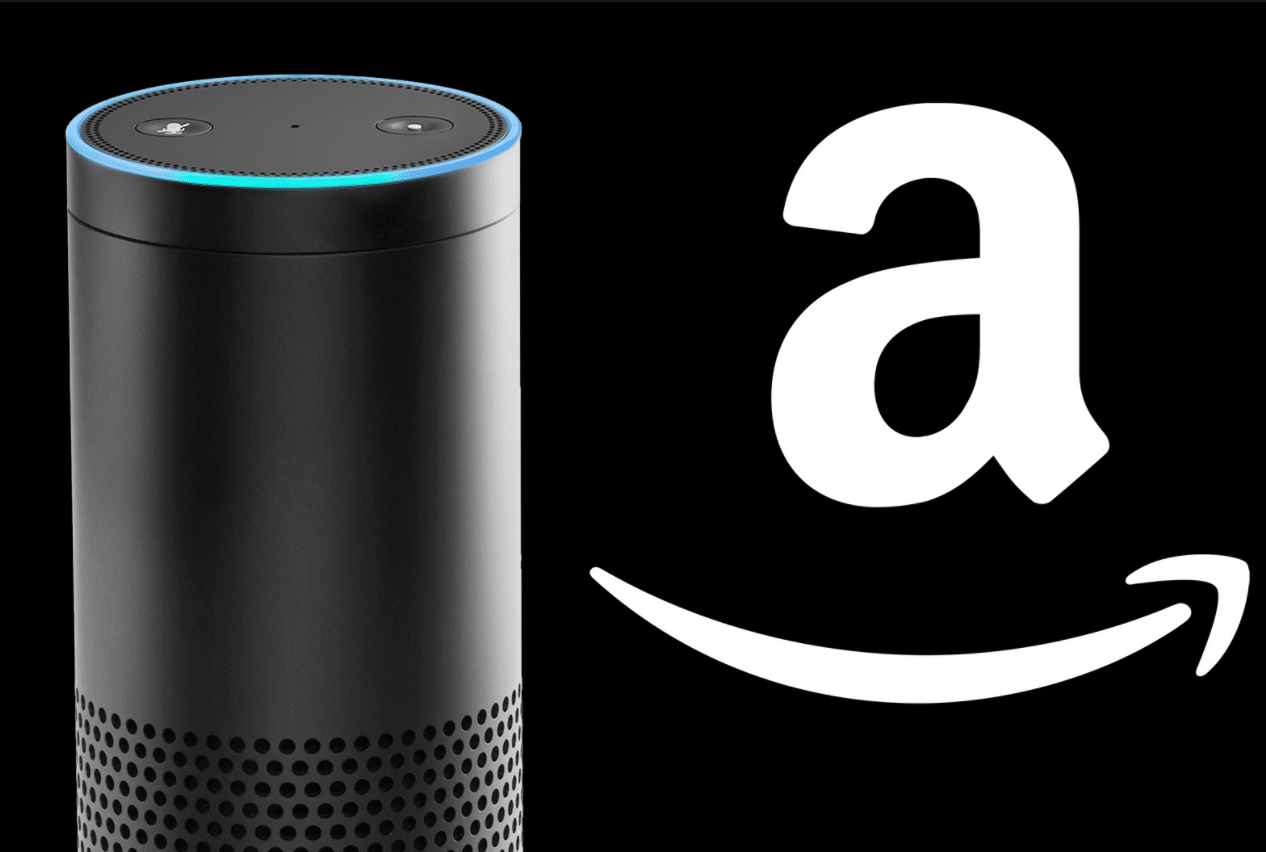
The following article has been written by Luigi Congedo, principal at BootstrapLabs. BootstrapLabs is an AI-focused VC firm in San Francisco. Editing and quotes added by the Emerj team.For information about our contributed material and publishing arrangements with brands, please visit our partnerships page.
2016 has been the year of artificial intelligence in Silicon Valley. AI-driven smart services are changing the way we work, live, and interact with our environment. Google’s AlphaGo won against the Go world champion; Alexa Echo has arrived in our homes; Facebook uses AI to remove offensive live videos; Gmail’s AI can detect over 99 percent of spam emails; and many other software solutions we use everyday have started integrating AI into their backend.
Last year, I had the unique opportunity to meet and learn from some of the top leaders behind the AI revolution during the many private and public AI events that I have helped organize for my company, BootstrapLabs.
I have dedicated a large part of my time reading about AI in scientific publications and industry news, thanks in large part to my day job as a VC, and in part to my personal curiosity.
As a reflection on progress in 2016, I decided to review some of my personal notes and create a short summary of my thoughts on recent developments in AI that have already impacted or have the potential to significantly impact the intersection of industry and consumers.
1 – Alternative Interfaces Showing More Promise Than Chatbots
 Chatbots and conversational UIs are still extremely limited and are probably the biggest hype in tech this year. At this stage, many of the funded startups are frameworks and development platforms to build bots with easy-to-make, automated chat agents that use pre-defined tasks. What’s worth recognizing in this influx of chatbots is the agent behind the UI—until recently, I had not seen any real intelligence operating behind a chatbot.
Chatbots and conversational UIs are still extremely limited and are probably the biggest hype in tech this year. At this stage, many of the funded startups are frameworks and development platforms to build bots with easy-to-make, automated chat agents that use pre-defined tasks. What’s worth recognizing in this influx of chatbots is the agent behind the UI—until recently, I had not seen any real intelligence operating behind a chatbot.
This trend has been strongly promoted by big tech leaders such as Facebook, Google, Slack, WeChat and more recently Amazon. Chatbots are growing faster than mobile apps because they are easy to build and do not have any particular front-end development requirements. The initial hype in Silicon Valley has generated a global buzz in developer communities (I wrote more about the chatbot ecosystem a few months ago).
(Below is additional detail from a 2/22/17 email conversation with Luigi)
“I do not see any chat-bots actually ‘working’ yet… retention of users for chatbots is still is extremely low. In general, I believe that hybrid chatbots is what can work now – augmenting human capacity by replacing repetitive Q&A, or on boarding process for a new user, (and few other uses cases) is what is now working. In the short term Chatbots will not change business model but they will help company to increase efficiency (do more with less) and reduce cost. This will result into more profit and over time maybe, new revenue models… but for now, again, I see this primarily as a cost-cutting tool.
I am more interested in how UX is changing with AI, speech recognition, NPL (Alexa was extremely popular in the Christmas season of last year). The way we interact with computing capacities has been the same since the computer was invented. Yes, smartphones have made our computers smaller and apps more user friendly, but we still need our hands to control PCs. For the first time now, AI is revolutionizing the way we use our technologies. I already set the alarm with my voice at home or can call a friend by just saying Siri, Call xyz. VIV acquisition by Samsung is also an indicator of this trend.
Also, computer vision is making devices smarter. This with other advances in technologies will turn our devices into autonomous vehicles, drones and software in general. Consequently this process will completely transform the way humans interact with machines. As Elon Musk recently stated: Humans must merge with machines or become irrelevant in AI age.”
2 – AI & Open Source
 Open source software libraries for artificial intelligence have skyrocketed. In December of 2016, Open.ai announced Universe, just one month before the Amazon’s release of MXNet, the eCommerce giant’s deep learning library. Many other AI open-source platforms also experienced an explosion of popularity this year. Some of the most popular include:
Open source software libraries for artificial intelligence have skyrocketed. In December of 2016, Open.ai announced Universe, just one month before the Amazon’s release of MXNet, the eCommerce giant’s deep learning library. Many other AI open-source platforms also experienced an explosion of popularity this year. Some of the most popular include:
- “TensorFlow” by Google
- “Deeplearning4j” by Skymind
- “CNTK” and “DMTK” by Microsoft
- “H2O” (adapted by major corporations such as Capital One, Cisco, PayPal and others)
- “MLlib” by Apache Spark
- “PredictionIO” (recently acquired by Salesforce)
- “Caffe” deep learning framwork (adopted by many developers and enterprises, including NVIDIA and IBM)
According to prominent AI experts, the majority of discoveries in AI are being published and, as Andrew Ng mentioned optimistically during an interview in the Harvard Business Review, the AI community is working together and sharing resources.
Software development and intellectual property are extremely important, but the most important factor that makes AI systems work is proprietary big data. Startups and developers will need to work closely with big corporations or invent creative ways to leverage big data sets to train their AI systems.
3 – AI is a Talent Game
According to the major technology leaders working for companies like Google, Facebook, Uber, and many others, the main challenge in the industry is lack of talent. The demand for AI experts, general data scientists and software engineers is growing faster than ever.
Another interesting trend is that the majority of AI publications and innovations are coming from scientists and teams with very mixed knowledge. Mathematical knowledge is becoming a sexy skill in the job market; indeed, real AI development requires an extensive understanding of mathematical principles.
The recent boom of startup acquisitions and consequent launch of many corporate AI labs, from companies like Google, Uber, SalesForce, Apple and Amazon, demonstrates the importance of talent in the space.
(Below is additional detail from a 2/22/17 email conversation with Luigi)
“Equity options has been so far one of the most rewarding strategy for early stage startups. Also, entrepreneurs should make sure to have a clear value proposition and set up their company identity to engage with best-in-class engineers around specific problems. Early stage startups cannot compete on funds with large and established tech companies, but they can still offer more attractive careers opportunities if they are able to switch the focus from salary to long term incentives, long term vision, or a solid stock options plan. Some of the most successful founders build their reputation into developer’s community to attract talent with free advice, participation in hackathon, workshop, and also speaking engagement.
Open source approaches are also very interesting. If you open part of your technology people will start build on top of it… this way the company can over time hire developers who are already familiar with the code and accelerate (1) scouting process, (2) integration of new hires, (3) adaption of their technology. Plus, this helps to create a community around what you do, and it has an incredible value for the long term success.”
4 – Uptick in Investments & Acquisitions
According to a recent article published by CBInsights, “nearly 140 private companies working to advance artificial intelligence technologies have been acquired since 2011, with over 40 acquisitions taking place in 2016 alone”. As reported by the World Economic Forum, more than 200 AI-focused companies collectively raised nearly $1.5 billion in 2016.
My personal feeling is that many venture capitalists don’t fully understand AI, don’t know where to invest, and are not prepared to leverage this emerging trend. Investors will learn fast, as they’ve done in the past, but the current acceleration of AI investments and the media hype around this topic are already generating fake myths that increase the level of noise. (meat)
(Below is additional detail from a 2/22/17 email conversation with Luigi)
“The hype will subside soon as AI becomes a core part of any technologies out there. A few years ago everyone was talking about on-demand, mobile first product… now this is a must have element and not anymore an innovative thing. I believe AI will experience the same process – soon people will use it and not even talk about it, and specially customers will not probably even think about it. AI will slowly be adapted, and become an invisible element of our life and work.
I’m not sure how to describe the implications here… but I can say that the same companies who were adding ‘big data’ in their pitch two years ago, now are using AI in their pitch when they try to raise money.
Probably a good way to look at this is: If you are building a tech company today and AI is not on your roadmap, or part of your core product, many VCs will doubt (or could have more second thoughts) on the scalability of your business over time. AI is not a must-have element yet for all startups – but for scaleability it can create a unique long term competitive advantage, and VCs are aware of this.
We are moving from automation to autonomous, and without AI elements in your product, competing in the marketplace will be increasingly difficult.”
5 — Commoditization of Many Services
One of the most interesting impacts of AI adoption over the long term is that AI will transform many important services in commodities. For example, in the next 5 years, many major cities in the world will have autonomous vehicles transporting people around at almost no cost. Last-mile delivery, long-range transportation, and logistics in general has already started that transformation.
Already, many small developers can leverage the same AI infrastructures used by big players like IBM Watson and TensorFlow. In addition, Amazon with MXNet, Salesforce with Einstein, and several others have announced they will be opening up their infrastructures to startups.
Adaption of AI systems at scale over the next 20 years seem poised to transform the home, healthcare, and education sectors, with the potential to empower disadvantaged communities by improving delivery of solutions and expanding access.
6 — AI is Not What It Seems on Screen
 One of the major challenges facing AI today is the sinister depiction that Hollywood seems to favor. Shows and films like “Westworld”, “Ex Machina”, “iRobot”, and other have painted AI in a dark light, focusing on what might go wrong instead of showcasing the possible positive outcomes.
One of the major challenges facing AI today is the sinister depiction that Hollywood seems to favor. Shows and films like “Westworld”, “Ex Machina”, “iRobot”, and other have painted AI in a dark light, focusing on what might go wrong instead of showcasing the possible positive outcomes.
Moving forward with caution is important, but so are basing actions on facts. The most diligent way forward would be an open and serious conversation around the impact of AI, facilitated amongst the private and public sectors, universities, and policy makers. Putting into place the social and economic scaffolding to aid in positive evolution of existing structures is an imperative part of this global conversation.
In the last few years, interesting initiatives with aims to start this conversation and planning have sprung up in the academic, public and nonprofit sectors, including Stanford University’s One Hundred Year Study on Artificial Intelligence (AI100), which recently published a long term investigation of the fields of AI and its influence on people, communities, and society. Others include the U.S. Government’s initiative under the Obama presidency, “The Administration’s Report on the Future of Artificial Intelligence”, and the nonprofit Open.ai.
7 — Employment and Education
Similar to other major innovation epochs, AI will drive significant job disruption. Over the next two decades, we may experience the automation of traditionally “middle class” work (from paperwork to management and beyond) as a major disruptive trend. If this is to be the case, one thing’s for certain: the education system must respond to this outlook, be involved in conversations with policy makers, and likely adapt curriculum and pedagogy in order to prepare the majority of the population for a very different job market in 10 or 20 years.
There are plenty of related issues currently being debated: Can AI be used to provide a lower-cost, more personalized education across demographics? Does it make sense to think long-term and, with predicted disruption to the job industry, start transforming our economic system from one dependent on a minimum wage to a nationwide basic income? The next decade will be an interesting one to witness, whether involved as an active decision-maker or an informed observer.
(Below is additional detail from a 2/22/17 email conversation with Luigi)
“I developed my knowledge thanks to my day to day job, by talking with C-level from large corporations, government agencies, founders etc… saying that there are also few clear numbers out there that are very interesting.
Everyone talks about job disruption but if we look at job creation projections from the US Bureau of Labor Statistics:
- All occupation 2014/2024 – growth rate – 6.5%
- Software developers, applications – 18%
- Computer systems analysts – 20.9%
Look also at the salary level 🙂
STEM occupations are projected to grow by 17.0 percent from 2008 to 2018, compared to 9.8 percent growth for non-STEM occupations. STEM workers command higher wages, earning 26 percent more than their non STEM counterparts.
More at -http://www.esa.doc.gov/sites/default/files/stemfinalyjuly14_1.pdf
From a recent: National Science Foundation report: ‘The broader STEM aggregate (including S&E technicians, S&E managers, etc.) remained relatively steady at 7.9 million in May 2012, compared with 7.8 million in May 2009 and 7.4 million in May 2006. BLS projects that between 2010 and 2020 S&E occupations—particularly computer and mathematical sciences, life sciences, and social sciences-related occupations—will grow at a faster rate than the total workforce. (See sidebar, “Projected Growth of Employment in S&E Occupations.”)’
Regarding the education – I believe in virtual learning and personalization of education programs. Thanks to AI we will be able to customize programs for each individual. Today educational programs are still decided for demographics groups or just country level.
Only a small portion of our education is customizable, and today unconventional programs as well as software edu platform are growing crazy.”
What Might Be Coming Up Next for AI
Machine learning has experienced major improvements over the last few years, and today many companies are adapting these technologies to leverage large amounts of data and ultimately optimize operational costs. The research world and private investment is driving massive improvements in many others areas of AI, including:
- Large Scale Machine Learning
- Deep Learning
- Reinforcement Learning
- Robotics
- Computer Vision
- Natural Language Processing
- Collaborative Systems
If you know my background, you know I’m a big enthusiast for the potentials of AI to improve many facets of society, from education to healthcare to business. At the current speed of population growth and consumption, AI is probably one of the only realistic opportunities in serving as an ongoing tool (if used ethically) for the survival for our planet.







